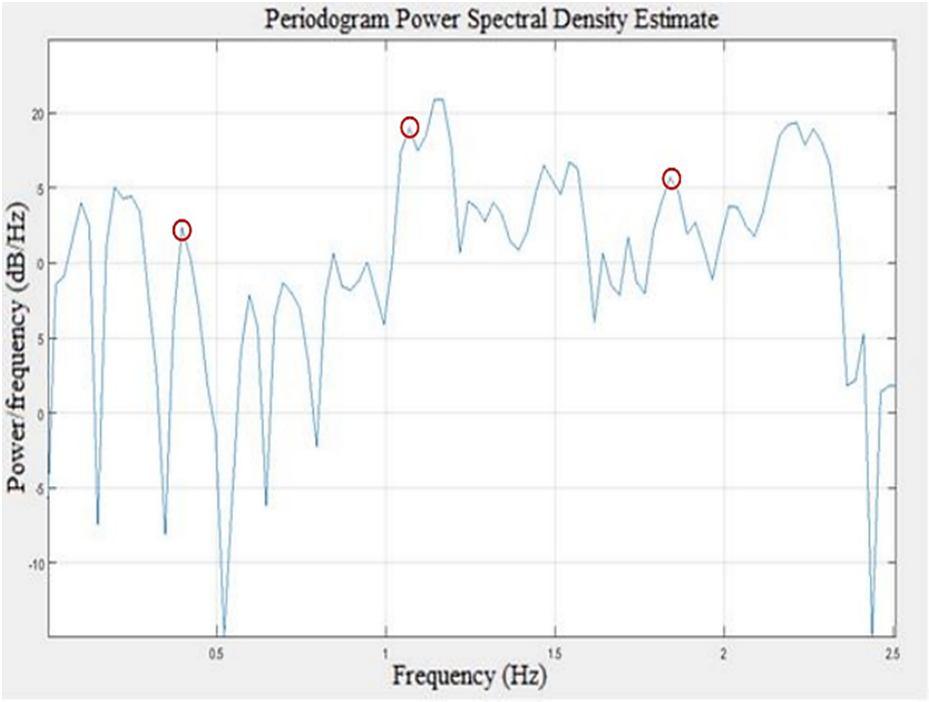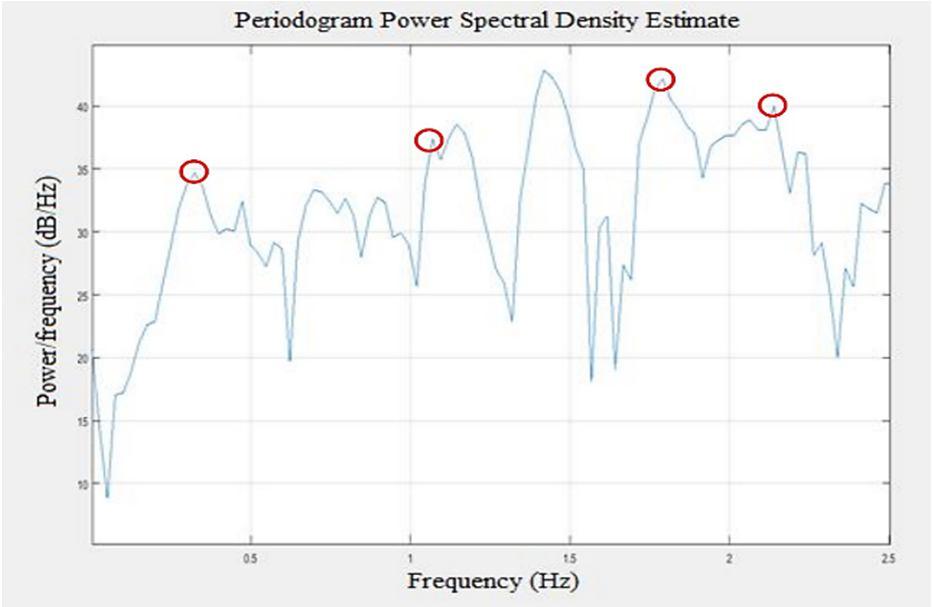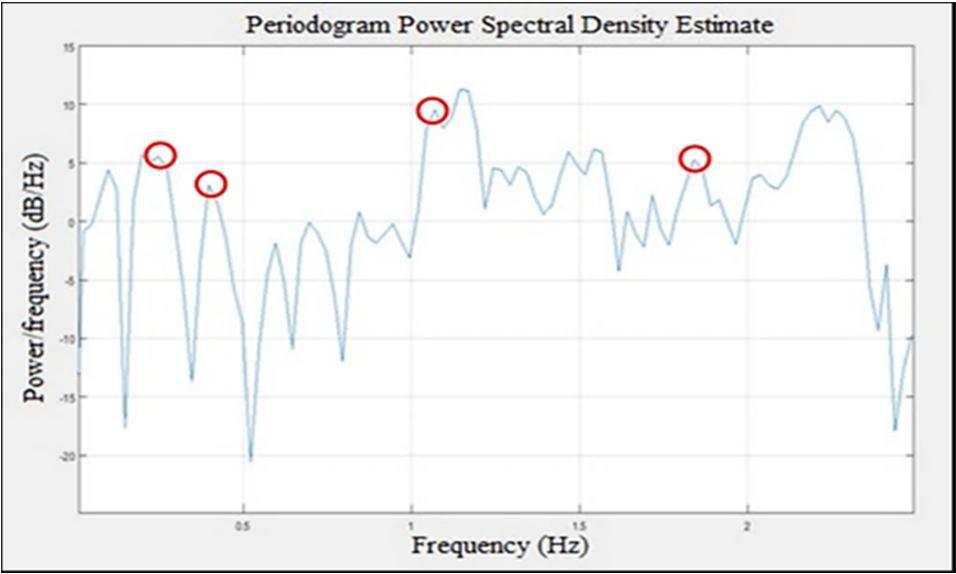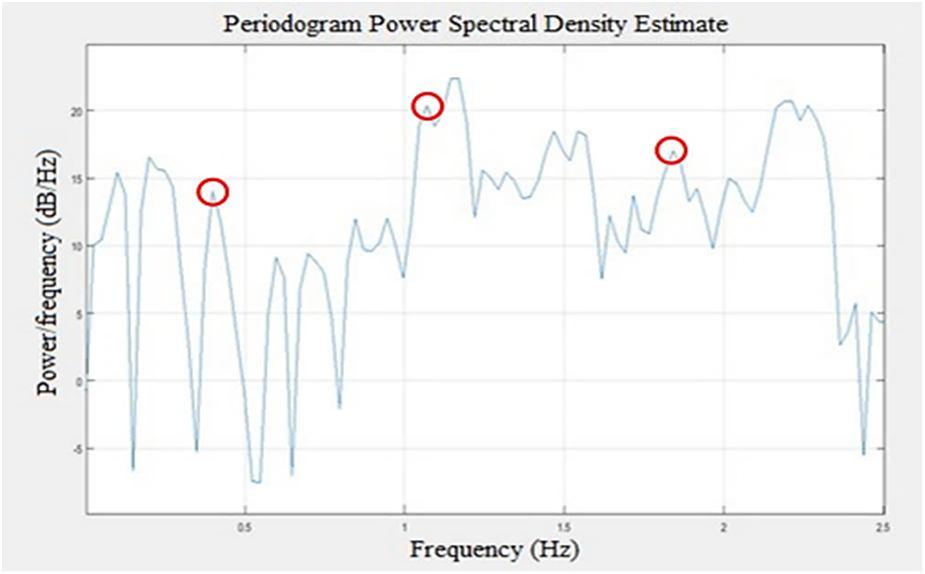
1 minute read
International Journal for Research in Applied Science & Engineering Technology (IJRASET)
from Evaluation of Natural Frequency of a Cable Stayed Bridge Using System Identification Technique
by IJRASET

ISSN: 2321-9653; IC Value: 45.98; SJ Impact Factor: 7.538
Advertisement
Volume 11 Issue II Feb 2023- Available at www.ijraset.com
IV.RESULTS
The acceleration data were collected at 5 Hz sampling frequency. PSD is performed on the generated data of different locations of the cable stayed bridge The PSD plot of the 6 locations are shown from Fig. 15 to Fig. 20




From the PSD Plot, it is seen that all modes are captured for the cable stayed bridge. But it is also seen that all modes are not identified in a single plot. So, it can be conclude that the position of sensors and no. of sensors plays an important role in system identification.

ISSN: 2321-9653; IC Value: 45.98; SJ Impact Factor: 7.538
Volume 11 Issue II Feb 2023- Available at www.ijraset.com
The comparative analysis of the identified frequencies and analytical modal frequencies are shown in Table 2.
Table 2: Identified frequency of the bridge
V. CONCLUSIONS
From the time history analysis of the bridge, it is seen that the first six natural frequencies are significant. In the identification, all the six natural frequencies are nearly correctly identified in the PSD plot. Again the considered 5 Hz sampling frequency is sufficient to identify the natural frequency upto 2.5 Hz i.e. the sampling rate should be the twice of the highest frequency. So, it is necessary to select the sampling rate in a wisely manner so that all the required frequency can be identified. Again, to identify a lower natural frequency, if higher sampling rate is used then it could not properly visible on the plot due to its resolution effect.
References
[1] Astroza,R.,Ebrahimian,H., Conte,J.P.andHutchinson,T.C.,“Systemidentificationofa full-scalefivestoryreinforcedconcretebuildingtestedontheNEESUCSD shaketable”,StructuralControlandHealthMonitoring,vol.23,Issue3,pp.535-559,2015.
[2] Au, Siu-Kui, “Fast Bayesian modal identification of structures usingknown single-input forced vibration data”, StructuralControlandHealth Monitoring, vol. 21,pp.381-402,2013.

[3] Caicedo, J.M.and Marulanda, J., “Fast mode identification technique for online monitoring”, STRUCTURAL CONTROL AND HEALTH MONITORING; vol.18,pp.416–429,2011.
[4] Caicedo, J.M., Dyke, J. S. and Johnson, E.A., “Natural Excitation Technique and Eigensystem Realization Algorithm for Phase I of the IASC-ASCE BenchmarkProblem:SimulatedData”,JOURNALOFENGINEERING MECHANICS,vol.130,pp.49-60,2004.
[5] Mustafa,S.,Debnath,N. andDutta, A.,“Bayesian Probabilistic Approach for Model UpdatingandDamage Detection for a LargeTruss Bridge”, International JournalofSteelStructures,vol.15(2),pp.473-485,2015.
[6] Nayek, R., Mukhopadhyay, S. and Narasimhan, S., “Mass normalized mode shape identification of bridge structures using a single actuator-sensor pair”, Structural Control Health Monitoring, 2018.
[7] Shrikhande,M.,FiniteElementMethodandComputationalStructuralDynamics,PHILearningPrivateLimited,2014.
[8] Zhan, J., You, J., Kong, X. and Zhang, N., “An indirect bridge frequency identification method using dynamic responses of high-speed railway vehicles”, EngineeringStructures,2021.
[9] Zhang, J. and Li, Q., “Identification of modal parameters of a 600‐m‐high skyscraper from field vibration tests”, Earthquake Engineering and Structural Dynamics,JohnWiley&Sons,Ltd.,pp.1-21,2019.


